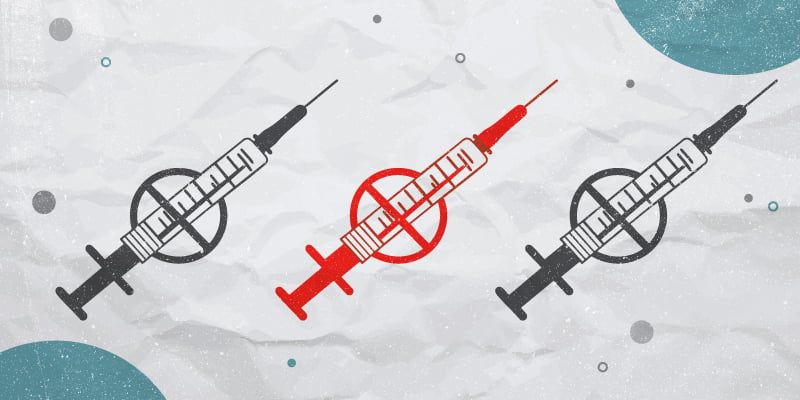Just over a year ago, the Pueblo City Council banned a free syringe service program, aiming to decrease litter of discarded needles in public places. The ordinance was in force a little more than three weeks before a Pueblo District Court judge issued a temporary restraining order that blocked it. In August 2024, the same judge invalidated the ordinance altogether.
With the judge’s order, the Colorado Health Network (CHN) and Southern Colorado Harm Reduction Association (SCHRA) – known as Syringe Services Programs, or SSPs – were allowed to resume their distribution of clean syringes, aiming to protect people who use drugs and reduce the spread of infectious diseases like HIV and hepatitis C from dirty injection needles.
The SSPs support a harm reduction strategy, which turns away from punishment and criminalization of people who use drugs in favor of implementing tools to prevent disease and overdose deaths, encouraging medical and behavioral health treatment, and thereby saving resources for the health care system overall.
The ban applied only to the free syringe distribution program. Other harm reduction programs administered by CHN and SCHRA, such as naloxone kit distribution to prevent drug overdoses and infection testing and behavioral health support, remained available. But would the ban discourage people who use drugs from taking advantage of these resources at the same rate as they had before it was instituted?
Eight months of data collection by a team representing the Colorado School of Public Health suggest the answer is “yes.”
ColoradoSPH team searches for effects of the needle exchange ban
The team collected local data in response to a request from CHN to quantify the amount of syringe litter left behind before, during, and after the ban, as well as people’s use of other SSP harm reduction services during those time periods.
“The Colorado Health Network was interested in understanding the impact of the temporary ban and if it would have implications throughout the state, but specifically with their Pueblo location,” said Dr. Kate LeMasters, assistant professor of Medicine – Internal Medicine with the University of Colorado School of Medicine.
“Of course, it also matters what the community finds important,” LeMasters said. “And that really had to do with syringe litter” and the potential danger of accidental needle sticks from syringes discarded in parks and other public places.
Among others, LeMasters worked with ColoradoSPH Master of Public Health candidate Pranav Padmanabhan, who made the Pueblo syringe ban project part of his MPH practicum. Padmanabhan, who said he developed a strong interest in harm reduction programs as an undergraduate student at Ohio State University, worked as the data analyst for the project starting in September 2024.
Syringe distribution up, SSP service utilization down
The team gathered relevant data from the five months pre-ban, the three-week period of the ban, and three months post-ban (January to September 2024). The information revealed several important points, said Padmanabhan, who presented the findings of the study with LeMasters to the Pueblo City Council on April 21.
Not surprisingly, syringe distribution increased after the ban was lifted. The amount of litter decreased marginally during the ban, and did not go back up after it was overturned. Perhaps most significantly, in the three months after the ban, naloxone distribution and participation in the SSPs’ health care services didn’t “return to expected levels,” Padmanabhan said.
Padmanabhan presented the specific finds of the research to the city council, comparing data from the three-month period after the ban to what “the expected trends” would have been without the ban:
- 3,400 more syringes were distributed
- 2,040 fewer syringes were discarded, despite the increase in syringe distribution
- 1,150 fewer participant visits to the SSPs occurred
- 900 fewer naloxone kits were distributed
Regarding the decrease in the expected numbers of participant visits to SSPs for health care services and Naloxone kits, Padmanabhan said, “I think a lot of that has to do with a chilling effect.” He speculated that the ban might have increased people’s “uncertainty about whether they can access the services they need.”
Testing the reliability of the data
A significant portion of the April meeting centered on the reliability of the data presented by Padmanabhan and LeMasters that showed a decrease in the amount of syringe litter after the ban. LeMasters noted that the data for the study came from the Pueblo Parks and Recreation Department, but one council member questioned whether that source was sufficient to measure the actual volume of discarded syringes. The council member added that he continues to see a high volume of syringe refuse “in the places where drug users gather.”
LeMasters agreed on the need to collect more detailed data about syringe litter – one source being the mayor’s office – and follow-up with the council. In an interview two weeks after the meeting, she spoke to the difficulty of gathering reliable data on litter.
“It’s very difficult to capture,” she said. For example, “responsible business owners” clean litter up themselves, a point other council members made. LeMasters said recently that her team sought additional information on litter from the mayor’s office under the Colorado Open Records Act, but were told no further data were available.
More information needed
Looking forward, LeMasters said it will be important to gather more data about syringe litter and use of SSP services to see if the patterns in Pueblo were random or “something that is more sustained.”
In addition, data from SSPs around the state would help the team to compare what happened in Pueblo to what happened in communities that did not have a SSP closure, LeMasters said.
A third follow-up research goal is to conduct interviews with community members in Pueblo – people who use and have used drugs, as well as people who say drug use is a huge problem – to understand their views and attitudes, LeMasters said. For example, if a person who uses drugs stopped seeking health care services from the SSPs, what was their reason? If a community member considers drug use as a major problem, what factors contribute to that view?
Still, LeMasters said she believes the project was ultimately beneficial, even if some council members didn’t accept its findings.
“They were appreciative that we did the study they asked for, using local data,” she said. The work and the presentation also was an opportunity to explain the benefits of harm reduction programs like the SSPs, she said.
Padmanabhan agreed. “I think we would want one of our takeaways to be that policymakers considering restrictions on harm reduction programs [also] consider the overall consequences that might result,” he said. “It’s not just syringe distribution; SSPs are a cornerstone of the health care continuum for people who use drugs.”





%20(2).png)
